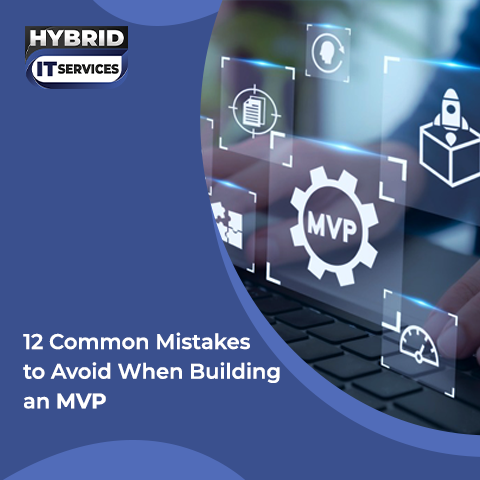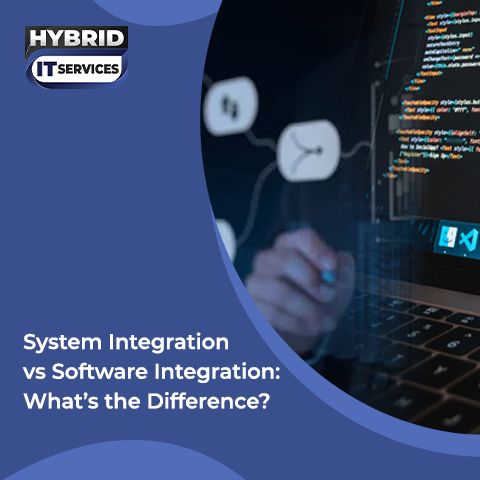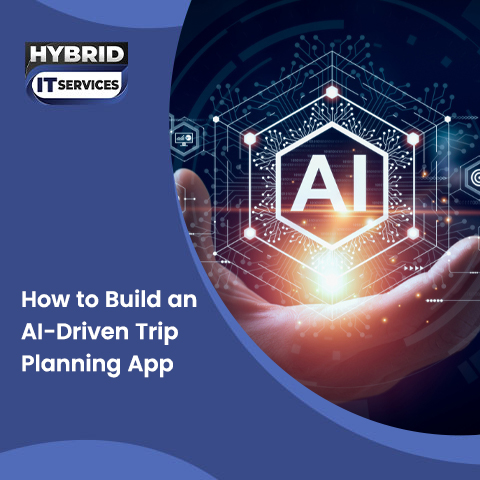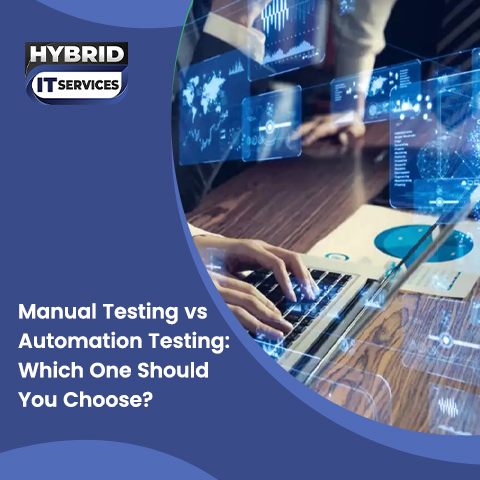Companies are perpetually wrestling with numerous tools, software, platforms, and systems to run the day-to-day operations. Although every tool may be used for a specific purpose whether accounting, customer service, HR, or inventory they tend to operate in silos, causing isolated data, redundant work, and delayed decision-making. System integration comes into play as a savior here.
At Hybrid IT Services, we're convinced that companies can only reach their full potential if all elements of their IT infrastructure are integrated with each other in perfect synergy. In this blog, we will discuss What is system integration, why it is important, and the top 8 benefits of system integration to companies regardless of their size.
What Is System Integration?
Enterprise systems integration refers to the method of bringing various IT systems, software, and applications together so they behave like a unified coordinated system. It's like building a central nervous system for your business such that information moves freely, updates in real time, and departments remain synchronized without human intervention.
Be it ERP, CRM, HRM, financial software, or customer support software, Systems integration services make these solutions communicate with each other.
For instance, let's say you’re salesperson closes a sale within your CRM. With a combined system, the information can update automatically the finance department's invoicing application, alert logistics to start the fulfillment process, and warn customer support to ready onboarding. No redundant work, no misunderstandings just seamless, real-time communication.
Why Businesses Need System Integration
Software system integration addresses headaches by providing a single platform that enables smarter workflows and greater visibility. Small startup or enterprise-level company, integration is no longer a nicety, t's a requirement. You may also read: What Are Systems Integration Services? A Complete Guide
Explore the Types of System Integration
System integration is not a single solution. Each company has unique needs, and based on how complex your IT infrastructure is, there are various forms of system integration to choose from. Let's examine the most typical types:
Vertical Integration
This means combining systems based on their function in a layered hierarchy. It's an excellent option for those firms that depend on tiered systems and distinct functional levels, such as manufacturing or logistics firms.
Horizontal Integration
In this type of model, systems are integrated between functions e.g., your CRM connected with your ERP, HRM, or accounting systems. The idea is to have a single portal where data from multiple departments can be easily accessed.
Horizontal integration is most favored by companies looking at cross-functional interaction and aggregated reporting of operations.
Star Integration (Spaghetti Integration)
In this configuration, every subsystem is connected directly to all other subsystems that it must communicate with. Though it suffices for small-scale requirements, it can easily get complicated as more systems come along thus the moniker "spaghetti."
It is typically not scalable but will function in situations where a handful of tools have to talk directly and rapidly to each other.
Common Data Format Integration
This system integration automation is done by making a single data format in which every system concurs. It makes data sharing easy and minimizes errors caused by incompatible formats. It's especially effective when multiple systems of different vendors are utilized.
Point-to-Point Integration
This is the most basic type of enterprise systems integration in which two systems are directly coupled. Though simple to implement to begin with, it gets increasingly difficult as more systems are integrated, hence more appropriate for temporary or small-scale integration.
Enterprise Service Bus (ESB) Integration
This is a contemporary, scalable, and solid means of linking several applications through a centrally located communication bus. Every system is connected to the bus, which manages all data processing, transformation, and routing. It's perfect for big businesses with the need to handle numerous complicated integrations without causing a big mess.
We assist businesses in determining the proper kind of integration depending on their infrastructure, scalability requirements, and business objectives at Hybrid IT Services.
The System Integration Process
Here's a step-by-step overview of the process:
Business Needs Assessment
Before all else, it's crucial to know what your business requires. Which departments are struggling with siloed tools? What data has to move between which systems? We do thorough discovery sessions with stakeholders to uncover pain points and integration objectives.
System Evaluation and Audit
Next, we conduct a complete review of your existing systems and software applications. This is where we determine the data formats in use, how information is being stored and retrieved, and what systems must communicate with each other.
Integration Design & Planning
After determining what must be integrated, our staff creates a custom integration architecture. This involves:
- Selecting the appropriate type of integration (e.g., API, ESB, cloud)
- Establishing data flows
- Determining security and compliance needs
- Developing a roadmap with milestones
Development and Implementation
Time to construct now. Our developers make the required connections, be it custom API development, middleware setup, or cloud service integration. Data transformation rules and mapping are implemented for accuracy and consistency. Explore more: How To Integrate Custom Software with Existing System?
Quality Assurance and Testing
Comprehensive testing is crucial prior to going live. We test for:
- Data precision
- Workflow automation
- System performance
- Security exploits
Deployment
After passing through testing, we deploy. Depending on complexity, it may be carried out in phases to minimize disruption. Throughout this stage, we also train and offer documentation so that there is easy adoption.
Monitoring, Maintenance & Support
Even when deployed, our work isn't finished. We constantly track the integrated environment for performance, scalability, and security. We also offer continuous support and upgrade as your company grows.
Top Benefits of System Integration for Businesses
At Hybrid IT Services, we assist businesses in automating work and avoiding inefficiencies by connecting their key systems together. Let's demystify the top 8 benefits of system integration and how they can revolutionize your business.
Enhanced Efficiency Across Departments
Once your systems are connected, there's less manual effort required. Data no longer requires to be entered several times. Staff have less time spent toggling between instruments or searching for data. They are able to concentrate on high-value activities instead.
Improved Data Accuracy
Manual data entry not only takes time but is also error-prone. Typing errors, outdated data, or no data at all can result in huge operational issues. System integration ensures that data remains intact and fresh on all platforms. With real-time syncing, your teams can trust the data they're operating on payroll, inventory, or customer service.
Cost Savings
Though combining systems might be an initial investment, cost savings in the long run are enormous. You eliminate duplicate software licenses, lower maintenance fees, minimize IT support requests, and release staff time. Instead of constantly buying new tools to solve individual problems, you optimize what you already have, that’s smart business.
Better Customer Experience
Customers today want quick, reliable service. Whether they're shopping, seeking support, or checking on an order delays or variability can lead to disappointment.
With systems in sync, your staff can deliver a seamless customer experience. Sales reps can view service history, support agents gain access to purchase history, and marketing can tailor outreach based on customer activity. Integration equates to your company acting more quickly, recalling customer histories, and providing improved service all of which enhance customer loyalty.
Scalability and Growth Preparedness
With growth, your company grows, so does your technology stack. System integration company offers a scalable base that promotes growth without interruption. It is easy to add new applications, departments, or even locations without having to recreate your entire IT infrastructure.
This flexibility is particularly important to companies seeking to grow in today's unpredictable markets. Finance and HR are able to get into sync on payroll and benefits through unified data systems. Everyone is in the know and on the same page.
Better Security and Compliance
Security incidents and compliance failures typically result from broken systems and obscured data trails. Integration provides you with centralized management of data access, storage, and flow simplifying how you safeguard sensitive data and maintain compliance with regulations such as GDPR, HIPAA, or PCI-DSS.
Hybrid IT Services constructs integration solutions with strong security capabilities that protect your company from threats.
Simplified IT Complexity
The greater number of tools you employ, the more complex your IT infrastructure. Having to manage single software, patches, updates, and user rights on various platforms will more likely than not overwhelming your IT staff.
Integrated ecosystem
Software System integration streamlines this by developing one integrated ecosystem. Maintenance is simpler, troubleshooting is quicker, and your IT personnel can devote their time to strategic innovation rather than fire-fighting.
How Hybrid IT Services System Integration Company Can Help
At Hybrid IT Services, we have expertise in creating and deploying personalized system integration approaches that address your specific requirements. From dealing with legacy systems to integrating the newest cloud-based applications, we can create bridges that:
- Streamline your business processes
- Unify your data
- Maximize the productivity of your workforce
- Minimize costs
- Enhance customer experience
Our experts have helped businesses from different industries automate, modernize their IT infrastructure, and create scalable solutions that can support growth.
Conclusion
A world where speed, accuracy, and insight are essential for competitiveness has made system integration a necessity. It's the cornerstone of smarter business, happier teams, and satisfied customers. Whether you're a small business seeking to streamline daily operations or an enterprise seeking to consolidate your environment, benefits of system integration provide a clear line of sight to growth and innovation.
Consult now at Hybrid IT system integration Services, and let us help you integrate your systems for a smarter, more connected business tomorrow.

.png)




